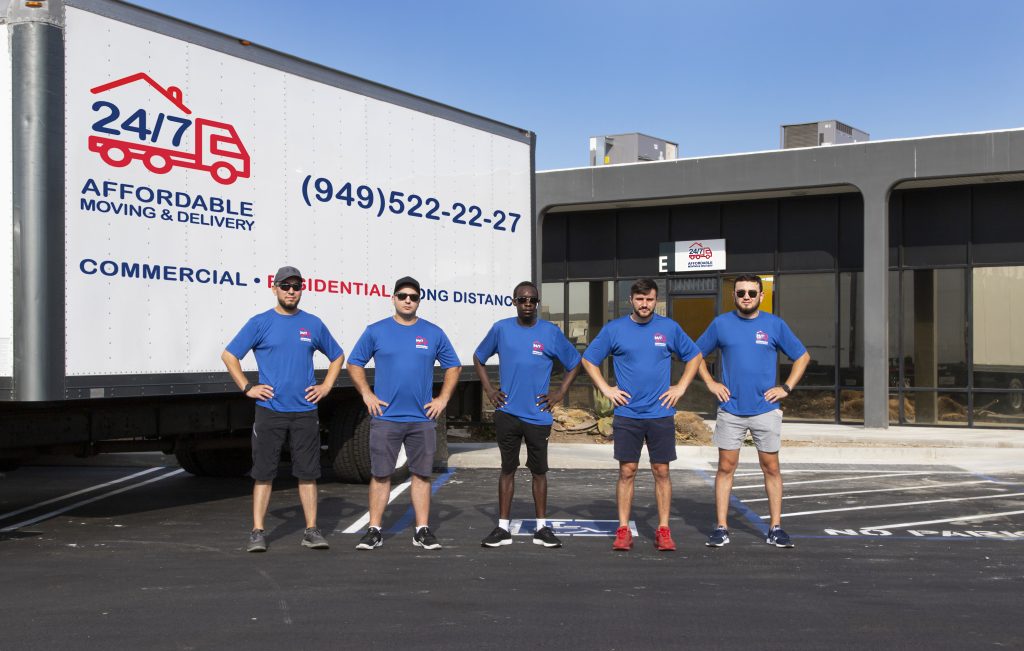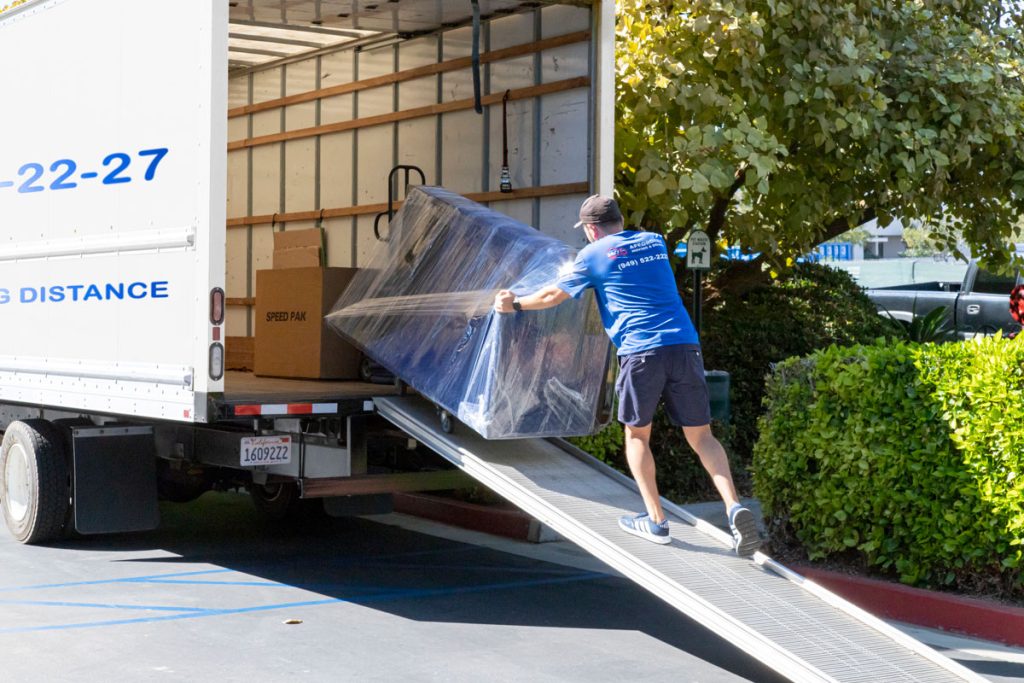Commercial Moving Checklist: Essential Steps for a Seamless Transition

Let’s be real — to move an office, you need a serious game plan, a keen eye for details, and a team that’s ready to roll up their sleeves. To simplify this task for you and ensure you won’t miss something when relocating your business, 24/7 Affordable Moving and Delivery has prepared an essential moving office checklist.
Planning and Preparation Moving Office
You need a clear vision of what your new office will look like, how it will function, and what you need to make that happen.
- Discuss with your key stakeholders what worked well in your current office and what didn’t. This will help you decide what kind of space you’re looking for and what features it needs to have.
- Next, think about the practicalities. What’s your budget? When do you need to be out of your current office? How much downtime can your business afford? Again, jot everything down.
- Remember to involve your team, as moving can be stressful for all. Share your plans, ask for their input, and reassure them that you’re doing everything possible to make the transition smooth.
This office moving plan may seem like a lot to take in but trust us, it’s worth it.
Measurement and Documentation Moving Offices
Start by taking a tour of your new office space. Visualize where you would put each desk, coffee maker, or a comfortable area for team meetings. Take along a tape measure, because you need to make sure that your current furniture and equipment will fit in your new space.
Once you’ve got your measurements, document them. Make a rough sketch of the floor plan and jot down the dimensions.
And while you’re at it, take note of any potential issues or modifications you might need to make to avoid any unpleasant surprises later on.
Select the Right Moving Company for Commercial Moving
When choosing the appropriate moving company for commercial moving, consider the following office moving checklist.
- Start by careful research. Look for companies that specialize in commercial moves and check out their reviews and ratings.
- Consider their services and don’t forget about storage if there’s a gap between when you move out of your old office and into the new one.
- Get a few quotes. The cheapest option isn’t always the best. Select a company that provides quality service at a fair price.
- Make sure the company is licensed and insured. This protects you in case anything goes wrong during the move.
One company that ticks all these boxes is 24/7 Affordable Moving and Delivery. We have a proven track record of successful commercial moves and offer a wide range of services, including packing, loading and unloading, and safe transportation. Plus, we’re fully licensed by DOT for local and interstate moves.
Team Engagement to be Transported
Moving is a big change, and change can be unsettling. But if each employee feels involved in the process, they’re more likely to embrace the move rather than resist it.
- Start by communicating with your team early and often. Let them know why the move is happening and how it will benefit them. Maybe the new office has a better location, more space, or better facilities.
- Involve your employees in the planning process. Maybe they have ideas for the new office layout or other suggestions.
- Don’t forget to celebrate once the move is done! Organize a small party or get-together in the new office.
A move is not just a physical transition, it’s also a psychological one. So, try to set the stage for a smooth move and a positive start in your new office.
Furniture and Equipment
Your furniture and equipment are at the heart of the operation, so use this checklist for office relocation to relocate them with no issues:
- Take an inventory. You might discover that some items are due for an upgrade or aren’t needed anymore.
- Think about how the furniture and equipment will fit into your new space. If you don’t have enough room for everything, rethink your layout or even consider getting rid of some things.
- Each item needs to be packed securely to ensure it arrives at the new office in one piece. This might mean using bubble wrap for delicate items or securing larger pieces with moving blankets.
- Once you’re in the new office, think about the workflow and how people will move around the space. Your setup should promote efficiency and comfort.
And remember, you don’t have to do this alone. We can take care of everything from packing to transporting to setting up, so you can focus on running your business.
Technological Transition
The tech side of things is also important, as we live in a digital age where almost every facet of our work relies on technology.
- Ensure that all your tech equipment — computers, servers, printers, etc., are properly disconnected, packed, transported, and reconnected in your new office.
- Back up all important files and information before relocation.
- Consider involving an IT professional to help plan and execute the move.
- Don’t overlook the software aspect. Are all your licenses transferable to new equipment if needed? Do you need to update any software as part of the move?
And once you’re all set up in the new office, test everything to make sure it’s working as expected.
Packing and Placement
Packing everything is often the most time-consuming part. These tips will make this task easier for you:
- Don’t just throw everything in boxes. Pack similar items together, use bubble wrap for fragile stuff, and don’t overfill those boxes — someone’s got to lift them.
- Write what’s in the box and where it should go in the new office.
- Before you move, sketch out a rough floor plan for your new office. Think about where everything should go.
- How will people move around the space? Where will clients sit when they visit? Try to visualize your daily routines in the new office.
If it all sounds like too much, there are pros who do this every day. They can help with everything from packing up your old office to setting up your new one.

Transportation and Logistics
Another important point of this business moving checklist is transportation and logistics.
Choose the right mode of transport like a fleet of trucks, a cargo ship, or an airplane, considering factors, such as the distance of the move, the volume of items you have, and of course, your budget.
After that, plan the route. It’s not enough to simply choose the quickest route on your GPS. Consider traffic, road conditions, and delays, such as construction or public events.
The time of day you choose to move can make a huge difference. For example, navigating a large moving truck through city streets during rush hour might not be the best idea.
Think about inventory management — keep track of what’s being moved and where it’s going. When you’re dealing with multiple truckloads, things can get confusing fast.
Once everything arrives at your new location, you’ll need a plan for unloading and setting up. Knowing where each box goes and who’s doing the heavy lifting will save you a lot of time and stress.
Storage and Protection
Finally, you need to make sure everything is stored and protected properly, both during the move and after you’ve arrived at your new office.
- Depending on the size and timing of your move, you might need some temporary storage space. Maybe your new office isn’t quite ready, or perhaps you’re downsizing and need somewhere to keep extra furniture and equipment.
- Now, onto protection. Your valuable assets, such as expensive office equipment or sensitive documents, need to be packed and transported carefully. Use high-quality packing materials, like sturdy boxes, bubble wrap, and packing paper, as well as specialized containers for items like electronics or artwork.
- And then there’s insurance. Accidents happen, even with the best planning. So, it’s worth looking into coverage options. Check what your moving company offers, but also consider taking out additional insurance if necessary.
- Once you’re in your new place, ensure each item is undamaged and working as expected before discarding packaging materials. This way, if there’s an issue, you’re better prepared to make a claim.
It is almost impossible to avoid challenges or unexpected situations during your relocation, but this office relocation checklist and a good dose of patience will help you make it work. And if you need a helping hand, 24/7 Affordable Moving and Delivery is always ready to support you.

